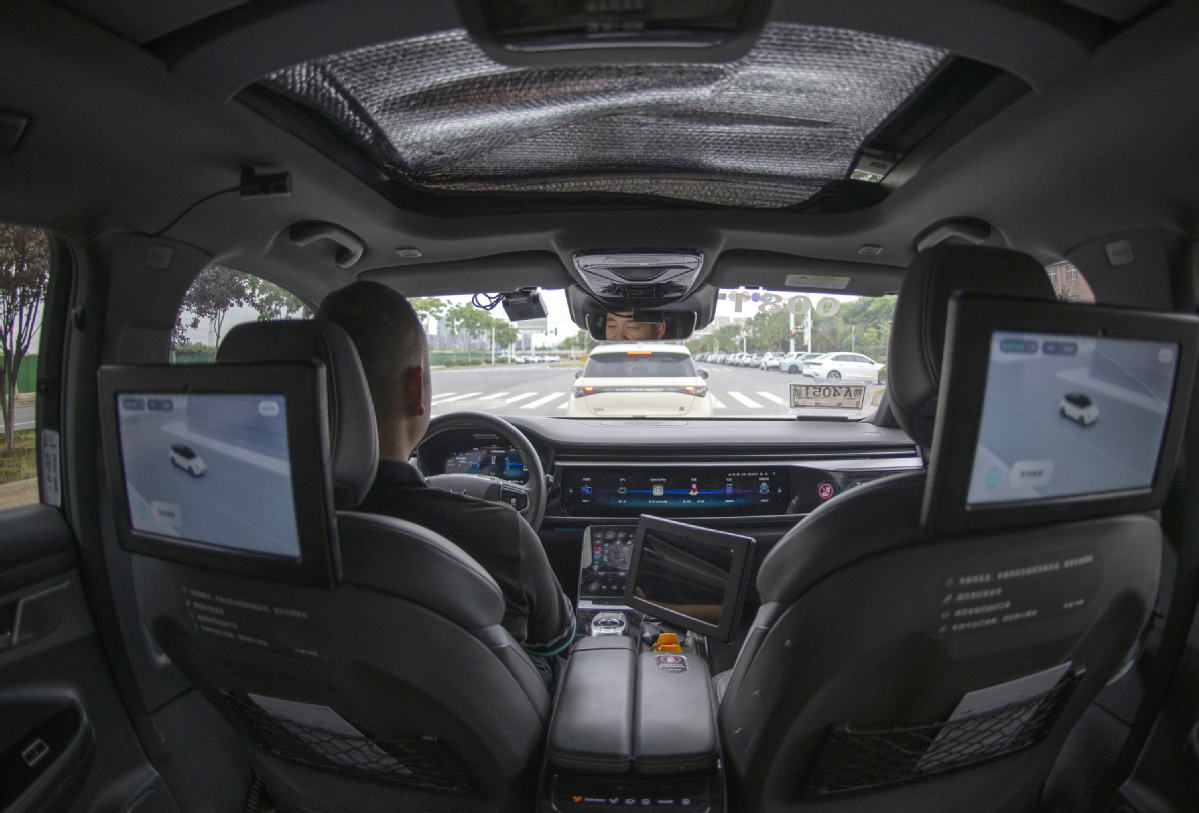
With technology advancing at an unprecedented pace, what once belonged to the realm of science fiction — self-driving cars — has become a reality. From Huawei's autonomous driving technology to Baidu's fully automated "Apollo Go" taxis, driverless technology has sparked widespread interest.
But the technology has raised some concerns, too: Will the widespread adoption of driverless technology dry up ride-hailing and taxi drivers' jobs? How should we view the impact of technological advancement on employment and the opportunities it might create?
READ MORE: Self-driving tech fueled by innovation
The ride-hailing industry has become a significant source of livelihood for many. According to the Ministry of Transport, as of June 30, China had about 7.12 million licensed ride-hailing drivers and 3.01 million licensed ride-hailing vehicles. This vast workforce relies on traditional driving skills, skills which will lose their importance with the advancement of driverless technology.
First, the development of driverless technology has outpaced expectations. For example, Baidu's Apollo Go, which has a presence in a dozen or so Chinese cities, was awarded a groundbreaking license by Beijing city authorities to pilot driverless ride-hailing services without a "safety driver" behind the steering wheel but with a safety monitor.
Chen Zhuo, head of Apollo Go, said Apollo Go aims to break even in Wuhan, Hubei province, where the company has launched ride-hailing services, by the end of this year and start making profit from next year. According to a McKinsey report, by 2030, driverless cars will become pretty common in cities.
Second, the proliferation of driverless vehicles could render drivers, particularly ride-hailing drivers, jobless, not least because the current high maintenance cost of driverless vehicles is bound to significantly reduce with technological advancements and mass production. Not to forget that autonomous vehicles do not have to be paid wages and social welfare, and can work much longer hours than drivers without requiring overtime payment.
Yet the ride-hailing drivers' jobs are unlikely to disappear overnight. Instead, the development of the driverless technology may create new job opportunities in the short term, and during the transition phase, autonomous car fleets will still require human supervision and management. For instance, safety operators will be needed to monitor autonomous vehicles for emergencies and other personnel for maintaining the vehicles.
Some companies are already organizing training programs to help current drivers transition to maintenance personnel or monitoring staff jobs for driverless vehicles. For example, Apollo Go has absorbed safety operators and technical maintenance personnel in its autonomous taxi service, which will help existing ride-hailing drivers to maintain their income while adapting to the advancement of driverless technology.
The advancement of driverless technology could also transform the logistics industry, creating more jobs in logistics management and vehicle dispatching sectors. For example, JD.com's unmanned delivery vehicles, being rolled out in some cities, require people with operational and monitoring skills. With proper re-training, existing ride-hailing drivers can transition to these new jobs.
Third, history shows that while technological progress brings the curtain down on certain traditional jobs, it creates new opportunities as well. The Industrial Revolution posed a threat to textile workers, but over time, new professions emerged. As such, we need to adopt long-term strategies to address the challenges and opportunities created by driverless technology.
In the long run, ride-hailing drivers have to adapt to the changes in the labor market. Automation and artificial intelligence (AI) technologies will not only take over jobs that require repetitive tasks but also push workers to learn higher skills and seek suitable employment in traditional/emerging sectors. For example, automation has reduced the demand for traditional assembly line workers but increased the need for highly skilled workers.
Governments and businesses play crucial roles in the development and application of disruptive technologies. So the government has to give policy support and organize training programs to help workers adapt to the technological changes. For example, Germany's large-scale vocational training programs at a time when the country introduced automation to the manufacturing sector helped workers acquire new skills and transition smoothly to new jobs.
Similar policies and programs are needed to advance driverless technology as well as secure the future of workers. Also, collaboration between the government and businesses can provide ride-hailing drivers with practical skills training, helping them to find new career paths.
ALSO READ: China strives to balance economic progress with environmental responsibility
And fourth, while short-term training can help the existing ride-hailing drivers to find new jobs, including as maintenance personnel and logistics coordinators, a comprehensive upgrading of skills will be needed to prevent loss of jobs in the long run.
The government can introduce effective skill transition programs — through a combination of online and offline training programs. In fact, online education platforms such as NetEase Cloud Classroom are offering workers flexible training opportunities in technologies such as AI and data analysis. And while the government should consider offering subsidies and tax incentives to companies to ensure they organize retraining programs for employees, the government and educational institutions can collaborate to launch targeted welfare-oriented technical training programs to facilitate the smooth transformation of the labor market.
The widespread adoption of driverless technology does pose a challenge to many traditional professions, but history tells us that the impact of technological progress on the labor market is often temporary. The key lies in how effectively the policies and re-training programs are used to help workers to maintain their income.
The author is deputy dean of Institute for Financial Studies, Shandong University.
The views don't necessarily reflect those of China Daily.=


